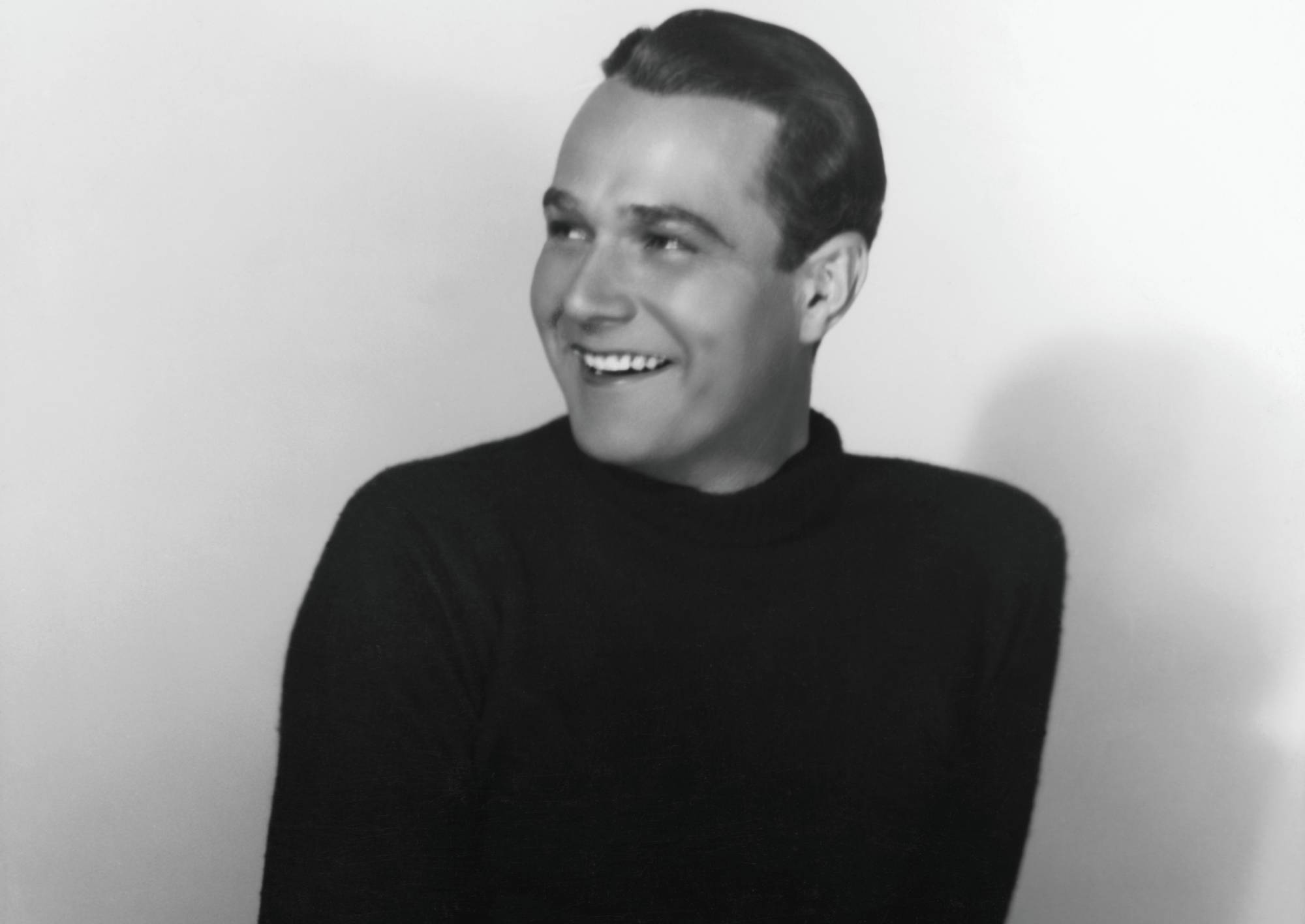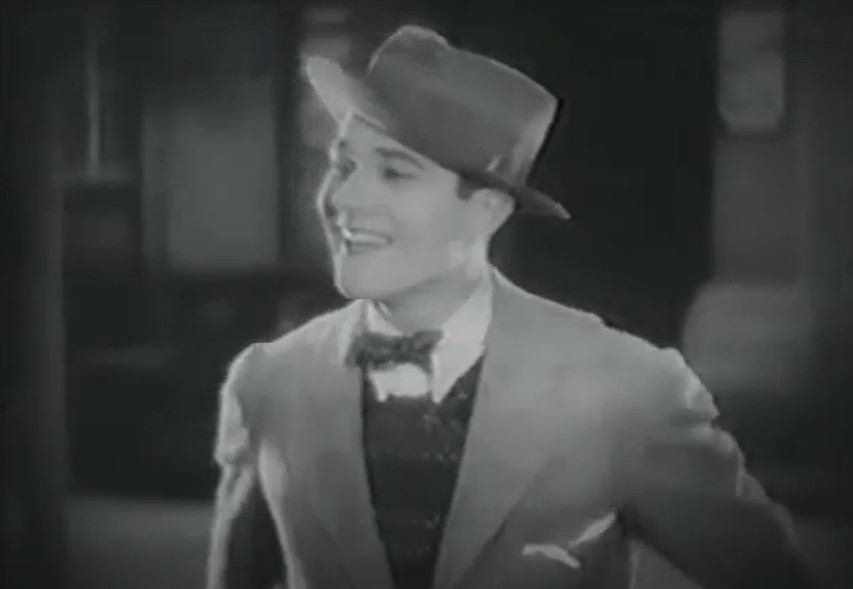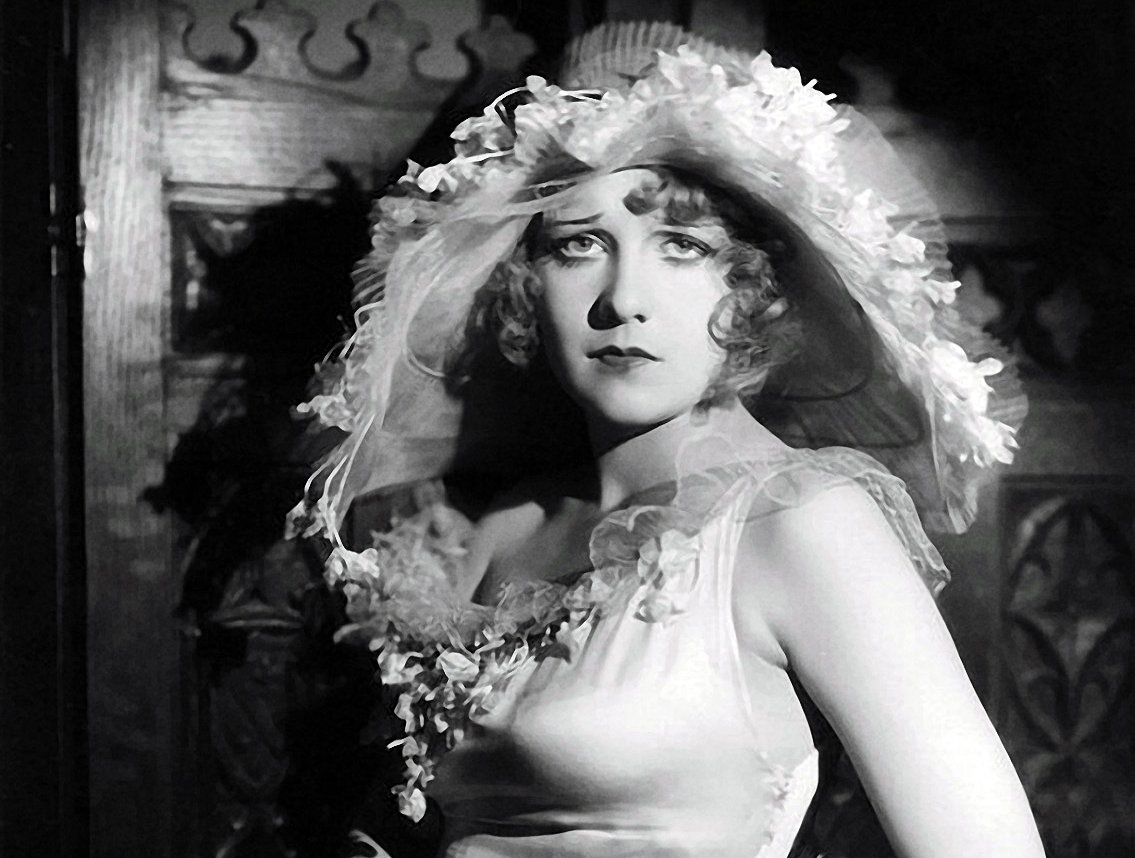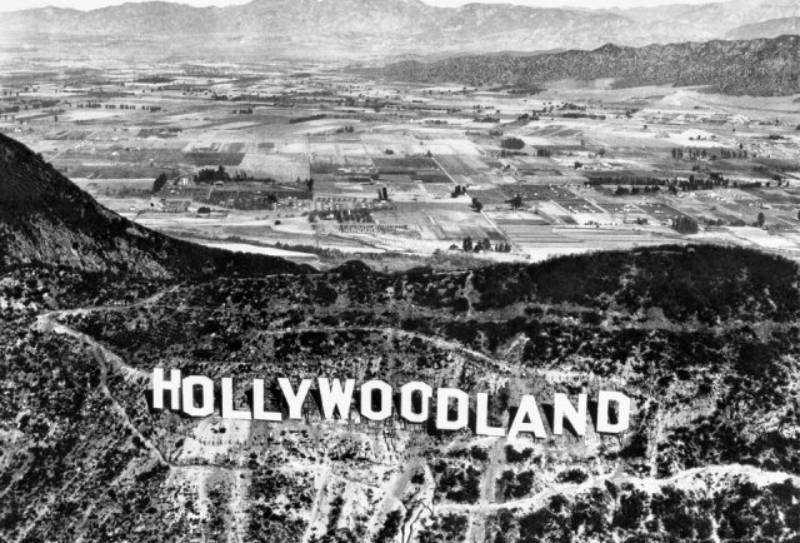From the glimmering lights of Hollywood to the opulent halls of high society, William Haines defied expectations, crafting a destiny unlike any other. Explore the untold story of a man who dared to love openly, at the expense of heartbreak, failure, and even physical damage.
William Haines Facts
1. He Was A Cinephile
Charles William Haines was born into a very conventional Virginian family in 1900, but he was not a conventional child. For one, Haines was completely obsessed with movies, and spent much of his childhood watching hour upon hour of film in his local theater. But that wasn't the only thing about him that was different. John Springer Collection, Getty Images
John Springer Collection, Getty Images
2. He Was A Rebel From The Get-Go
Haines knew from a young age that he was gay, and that his small town couldn't hold his big dreams. As soon as he turned 14, he made a daring escape. He set off to Richmond and then to Hopewell, a town with a notorious reputation for “immorality”. It gets more scandalous. Studio publicity still, Wikimedia Commons
Studio publicity still, Wikimedia Commons
3. He Wanted More
When Haines ran away from his family, he wasn't alone. With him was another man he identified as his boyfriend, and the two began work at the nearby DuPont factory to make ends meet. Only, this wasn't enough. Haines wanted glamour, and that meant money.
He soon went to controversial lengths to get it.  University of Washington, Wikimedia Commons
University of Washington, Wikimedia Commons
4. He Made Controversial Choices
The DuPont factory didn't exactly pay a hefty wage, so Haines and his boyfriend made a racy decision. They decided to open up a dance hall and capitalize on the town's seedy reputation. That wasn't all, though. There's a good chance the dance hall also functioned as a brothel.
When word got out, Haines's brand-new life imploded.  Hulton Archive, Getty Images
Hulton Archive, Getty Images
5. His Family Interfered
Back home, Haines's family had been desperately looking for their son, and the authorities finally found him. However, his response was probably not what they were expecting. Foreshadowing his later steel in the face of threats, Haines refused to go back home with them, and stayed in Hopewell.
Only, he was about to find out that no matter where he ran, problems would still find him.  Ken Lund from Las Vegas, Nevada, USA, CC BY-SA 2.0 , Wikimedia Commons
Ken Lund from Las Vegas, Nevada, USA, CC BY-SA 2.0 , Wikimedia Commons
6. His City Burned Down
Despite Haines's refusal to go home, he began to send money back to his family from Hopewell to help support them. Then utter disaster struck. In 1915, just a year after he arrived, almost the entire town burned down. Now this was a sign to get out, and Haines quickly moved to New York City.
It was a move that changed his entire life. New York Public Library, Picryl
New York Public Library, Picryl
7. He Was A Kept Man
After settling in New York—with or without his boyfriend, historians aren't sure—Haines yet again found scandal. He set up in the gay community of Greenwich Village, but also became the "kept man" of an older woman. So, you know, scandal and glamour in equal parts.
Then he got a different kind of attention entirely. Metro Goldwyn Mayer, Wikimedia Commons
Metro Goldwyn Mayer, Wikimedia Commons
8. He Had His Big Break
Haines, in case you're wondering, had one great face—and soon everybody knew it. A talent scout spotted him in the "New Faces of 1922" contest that Goldwyn Pictures was putting on, and the studio quickly signed the All-American actor in a tidy contract.
It was just bit parts at first, but he quickly blew up.  Hulton Archive, Getty Images
Hulton Archive, Getty Images
9. His On-Screen Kiss Was Iconic
In 1924, Haines starred in The Midnight Express opposite Elaine Hammerstein. It gave him a bizarre kind of publicity. Actress Peggy Hopkins Joyce proclaimed to a magazine that Haines's onscreen kiss with Hammerstein was the most exciting she had ever seen.
But that wasn't the only female admirer Haines got. Bain News Service, Wikimedia Commons
Bain News Service, Wikimedia Commons

History's most fascinating stories and darkest secrets, delivered to your inbox daily.
10. He Made A Life-Long Friend
In 1925, Haines made Sally, Irene and Mary and earned himself a lifelong friend the process. It was here he met Hollywood legend Joan Crawford, and the two became fast friends. Haines was so fond of her, he even gave her the teasing nickname "Cranberry".
Well, he was about to match the starlet in fame.  Metro Goldwyn Mayer, Wikimedia Commons
Metro Goldwyn Mayer, Wikimedia Commons
11. He Skyrocketed
In 1926, Haines achieved a significant milestone in his career with the film Brown of Harvard: He found a niche for himself. In the film, Haines played a snobbish, arrogant youth who, by the end of the story, has gotten a big ego check. The audiences ate it up, and this soon became his go-to-type.
Haines was now right where he wanted to be. But he was about to find the last missing piece.  MGM, Brown of Harvard (1926)
MGM, Brown of Harvard (1926)
12. Someone Wooed Him
By now, Haines had been living in Los Angeles, the center of film making at the time. However, a 1926 promotional trip back to his old haunt of New York proved to be a date with destiny. While there, Haines met Jimmie Shields, a debonair-looking young man.
For Haines, it was love at first sight, and he offered to have Shields move to Los Angeles with him, where he promised to get him work as an extra. But there's much more to this story.  MGM, Brown of Harvard (1926)
MGM, Brown of Harvard (1926)
13. He Wanted To Help Him
In truth, Shields's origins and background are a bit hazy, and maybe for good reason. There's some indication that when Haines met him, Jimmie was working on the streets for money. Suddenly, Haines's offer to move him to New York and support him takes on an entirely different meaning.
Either way, Shields agreed. But it didn't go the way either of them thought it would.  MGM, Brown of Harvard (1926)
MGM, Brown of Harvard (1926)
14. His Boyfriend Quit On Him
Cynical hearts might think that Shields was just using Haines to get into a more stable life, and possibly get famous, to boot. Nothing could be further from the truth. Although Haines made good on his promise to get Shields roles on set, acting didn't interest Shields at all.
He soon stopped. Instead, he did something quite surprising with his time.  Leslie-Judge Company / Metro-Goldwyn-Mayer, Wikimedia Commons
Leslie-Judge Company / Metro-Goldwyn-Mayer, Wikimedia Commons
15. He Found Pure Love
As it turned out, Shields wasn't into fame or fortune. He was simply into William Haines. Shields fell as deeply in love with the actor as Haines was with him, and he became a common sight around sets only because he delighted in bringing his boyfriend home-made lunches.
They were an item, living their romance publicly and unapologetically. Which means you just know someone had to ruin it.  MGM, Brown of Harvard (1926)
MGM, Brown of Harvard (1926)
16. The Media Went Silent
Since Haines was such a big star, every little detail of his life was the talk of the town—except, that is, this most recent development. There were only a few whispers about it, likely because his studio made sure to lock those little bits of information down tight.
This suited Haines just fine, and he continued to party with glamorous stars like Crawford, Jean Harlow, and Marion Davies. But all good things come to an end. Unknown- Revista Ecran, CC0, Wikimedia Commons
Unknown- Revista Ecran, CC0, Wikimedia Commons
17. He Resorted To Deception
Eventually, reporters put pressure on Haines to open up about his love life. Surely there was a beautiful woman he had his eye on? Knowing what people expected of him in this conservative time, Haines told an all-out lie. He would frequently say he had a desperate crush on Polly Moran—a friend and colleague who may have been in on the ruse.
It kept the wolves at bay...for now.  MGM, Wikimedia Commons
MGM, Wikimedia Commons
18. He Defied Haters
Throughout all this, Haines found ways to both display his sexuality and be true to himself, all while having plausible deniability. He often took Shields to movie premieres with him, and even became famous for playing wise-cracking figures—campy, quirky personalities that let him express himself in a winking manner.
Still, big changes were coming, both to his career and his personal life.  Universal Pictures, Wikimedia Commons
Universal Pictures, Wikimedia Commons
19. He Made A Great Leap
By the 1930s, Hollywood had almost fully transitioned to the talkies. It was a dangerous time for silent film actors, as many of them had foreign accents or harsh voices that executives didn't think would please audiences. But Haines had a secret weapon. His voice was beautiful and smooth, and he immediately made the leap with much success.
Yet even has he survived into the talkies, Hollywood's next upheaval ruined him.  MGM, Show People (1928)
MGM, Show People (1928)
20. There Was A Code Against Him
Around this time, Hollywood introduced a production code, also called the Hays Code, that insisted on showing only "Catholic values" in film. Among other restrictions, any hint of sexuality—much less homosexuality—was strictly verboten.
In other words, there was a target right on Haines's back. It didn't take long for the bullet to hit.  Metro-Goldwyn-Mayer MGM, Wikimedia Commons
Metro-Goldwyn-Mayer MGM, Wikimedia Commons
21. He Got The Upper Hand
In preparation for the code coming down, Haines's studio began insisting that its actors keep to strict morality clauses, not just on-screen but in their own lives. This led to his first rebellion. Haines refused to have any morality clause at all in his contract, a demand that led MGM to only give him two-year contracts instead of the usual five.
For Haines, it swas a small price to pay for his freedom. But the pressure only continued. MGM, New Adventures of Get-Rich-Quick Wallingford (1931)
MGM, New Adventures of Get-Rich-Quick Wallingford (1931)
22. His Studio Told Him To Live A Lie
Haines may have got off from the morality clause issue, but his studio wasn't done fighting. Louis B Mayer, the notorious head of MGM, then began insinuating that Haines should start up a lavender marriage with one of the many actresses on the lot.
It went against everything Haines believed in, but for a moment he gave in.  General Photographic Agency, Getty Images
General Photographic Agency, Getty Images
23. His Marriage Proposal Got Rejected
Faced with societal pressure to conform, Haines proposed to his long-time friend Anita Page while they were working on the set of Are You Listening? Luckily for everyone involved, Page—likely wanting to support her friend, not enable Mayer—said no.
Sadly, Haines was about to make a fatal mistake.  Studio publicity. MGM, 1929., Wikimedia Commons
Studio publicity. MGM, 1929., Wikimedia Commons
24. He Got Caught
In 1933, the single worst and most momentous event of Haines's career occurred. That year, Haines had been cruising around Los Angeles and picked up a sailor at Pershing Square. But just after taking him into a YMCA, the worst happened: Authorities caught and arrested him.
Haines knew he was in big trouble, but he didn't know how much.  MGM, Are You Listening? (1932)
MGM, Are You Listening? (1932)
25. He Got A Cruel Ultimatum
After this incident, Louis B Mayer knew he had his unruly star in a chokehold, and he didn't plan on letting him go any time soon. Accordingly, he gave Haines a brutal ultimatum. He could marry a woman right quick, or he could keep on with his lover Shields and any other man he might want. But if so, he was out of Hollywood.
Haines's response was legendary. Screen Archives, Getty Images
Screen Archives, Getty Images
26. He Didn’t Back Down
Louis B Mayer was no pushover, and standing there in the office that day, Haines must have been terrified. But he didn't let it change his mind. According to the grapevine, Haines looked Mayer right in the eye and said, "I'll give up Jimmie when you give up your wife".
He walked out of the studio with his head held high. But his battle was just beginning.  MGM, Way Out West (1930)
MGM, Way Out West (1930)
27. He Downgraded
When Haines terminated his contract with MGM, he believed that his enduring fame would get him through this and he would be back on top in no time. He soon found out how wrong he was. He quickly noticed that show business was not forgiving, and only Poverty Row studios—who had limited budgets and lesser reputations—extended a hand to him.
Bitterly, he accepted the help. But this didn't last long. Melbourne Spurr, Wikimedia Commons
Melbourne Spurr, Wikimedia Commons
28. He Downgraded
William Haines's journey in the realm of Poverty Row was a bust from the start. He spent the following year making a few movies with them, such as Young and Beautiful and The Marines Are Coming, but never got the same fulfilment from them that he had before.
For that reason, he made a jolting decision.  Mascot Pictures, The Marines Are Coming (1934)
Mascot Pictures, The Marines Are Coming (1934)
29. He Quit Hollywood
Realizing that his artistic ambitions and creative potential weren't what they used to be, Haines made the courageous decision to retire from acting—bidding farewell to the glitz and glamour of the big screen. He publicly chose his life and his true self over the blinding lights of Hollywood.
Then he proved just how committed he was to this path. Breve Storia del Cinema, Flickr
Breve Storia del Cinema, Flickr
30. He Missed A Big Opportunity
Even though Haines didn’t leave show business as the superstar he once was, there were still some people who wanted to cast him. In particular, in 1950 director Billy Wilder gave him the opportunity for a cameo in the classic Sunset Boulevard. Haines said no—and then he did more than that. Studio, Wikimedia Commons
Studio, Wikimedia Commons
31. He Thumbed His Nose At Hollywood
Showing just how done he was with film-making, Haines commented after he declined Sunset Boulevard: "It's a rather pleasant feeling of being away from pictures and being part of them because all my friends are. I can see the nice side of them without seeing the ugly side of the studios”.
This was a man who refused to look back. Instead, he ventured into an entirely new and surprising career.  Bettmann, Getty Images
Bettmann, Getty Images
32. He Had Exquisite Taste
Prior to his decision to retire from Hollywood, Haines had already ventured into a new business endeavor. A few years earlier, he had become a part-owner of an antique store. As it turned out, Haines had impeccable taste and an eye for design, and his starlets from all across Hollywood admired the pieces in his home.
This turned into much more than a side hobby.  Ruth Harriet Louise, Getty Images
Ruth Harriet Louise, Getty Images
33. Women Loved Him
With Haines out of Hollywood, an old friend rocketed him to stardom in a different way. Joan Crawford was still one of his closest confidantes, and she asked him to decorate her home just like he had decorated his own. Not only that, she spread word of mouth that the actor was the best interior designer around.  Studio Publicity, Wikimedia Commons
Studio Publicity, Wikimedia Commons
34. He Became A New Kind Of Superstar
With Crawford as a reference, Haines’s client list grew bigger and gave him the confidence to turn this into a solid career. He and Shields established William Haines Designs, an interior decorating company. In the blink of an eye, Haines’s fallback career turned into a remarkable success.
But just as he was getting back on his feet, something bone-shaking happened.  Ruth Harriet Louise, Getty Images
Ruth Harriet Louise, Getty Images
35. He Had A Heartwarming Encounter
Haines and Shields were now leading a peaceful life in their beach home. Then a small incident kicked off a twisted scandal. One day in 1936, their dog escaped the house—and luckily, a little boy came in to the rescue. Haines was very thankful and offered six cents to the boy for his help.
This was a simple act of kindness, so Haines normally forgot about it and moved on with his life. Soon after, it all came back to him.  Hulton Archive, Getty Images
Hulton Archive, Getty Images
36. He Was Misunderstood
After the boy returned home, the incident got completely blown out of proportion. Because Haines had given the boy money for his troubles, the child's family interpreted it as a proposition. Word spread quickly, and this hatred turned into something way bigger than anybody predicted.  MGM, Wikimedia Commons
MGM, Wikimedia Commons
37. He Got Mobbed
In a disturbing turn of events, a group of 100 members of not-so upstanding citizens angrily gathered and then marched towards Haines and Shields's house. They were calling themselves the "White Legion," in case you needed any further proof these were a bunch of dangerous idiots.
Anticipating a confrontation at their doorstep, the couple braced themselves. They could have never known what was coming. Employee(s) of MGM, Wikimedia Commons
Employee(s) of MGM, Wikimedia Commons
38. He Was A Victim
The group took Haines and Shields out of their private space and began beating them up. Without any interrogation or a need to learn the true story, these people hurt the two pretty badly. They then left off—leaving Haines and his partner in shock.
The next morning, Haines had to deal with the tragic aftermath.  Archive Photos, Getty Images
Archive Photos, Getty Images
39. He Was In The Dark
Throughout this, Haines was still utterly unaware of why these horrible people had invaded his space and hurt him. He was trying to search for answers, but he knew he didn’t do anything wrong. Expressing his confusion, he only said, "Some wild untrue rumor must have stirred them up. It might have been some sort of clan or secret organization".
But it was far from over. General Photographic Agency, Getty Images
General Photographic Agency, Getty Images
40. Their Friends Rose Up
In the wake of this violence, vengeance was coming. Haines and Shields's many powerful friends, including Marion Davies, went up in arms about allegations and attack. Davies even tried to get her long-term lover, newspaper tycoon William Randolph Hearst, to use his network to help prosecute the neighbors.
Yet Haines took a different route. Screenland, Wikimedia Commons
Screenland, Wikimedia Commons
41. They Forgave Their Neighbor
Although Haines and Shields definitely would have had a case against their neighbor who made the initial complaint, the couple decided pursuing them wasn't worth their time. They never did end up pressing charges. Likewise, the authorities cleared the couple of any guilt when they saw the total lack of evidence.
Even so, the denouement was bittersweet.  Hulton Archive, Getty Images
Hulton Archive, Getty Images
42. The Authorities Let Him Down
Haines may not have wanted to press charges against the little boy's family, but he did want to find the group of people who attacked him that terrifying day. He would be sorely disappointed. The authorities never managed to track down and charge the assailants either, never letting Haines have his day in court.
But as the shadow of this sinister incident receded from Haines’s life, an opportunity of a lifetime presented itself. Mascot Pictures, The Marines Are Coming (1934)
Mascot Pictures, The Marines Are Coming (1934)
43. Someone Trusted Him
In 1937, Haines got a big comeback. Jack L Warner—of Warner Bros studios —wanted to hire Haines as his decorator. The project excited him, and with his sense of style and creativity, Haines left an enduring mark on Warner's lavish home.
Haines was back in business. He was about to be better than he ever was.  Press photo, Wikimedia Commons
Press photo, Wikimedia Commons
44. He Reached International Fame
After the Warner project, Haines’s clientele expanded to include not only high-profile Hollywood figures but also international clients. Haines also redecorated Winfield House in London, the residence of Walter Annenberg during his tenure as the US Ambassador.
By the time he finished this project, he was officially a world-class interior designer.  U.S. Department of State, Wikimedia Commons
U.S. Department of State, Wikimedia Commons
45. His Art Was In The Movies
Haines's influence extended beyond his own interior design projects. Famous directors sought after his collections, wanting to incorporate Haines's distinct aesthetic into their films. Haines wasn’t starring in any movies anymore, but his collections were.
Notably, the walls of the plantation Tara in the iconic film Gone with the Wind displayed pieces from Haines's collection. So, he was still a big part of Hollywood. But one last seismic shift was coming.  MGM, Wikimedia Commons
MGM, Wikimedia Commons
46. He Went To War
Haines had spent the 1920s and 1930s as a movie star and then an interior decoration mogul, but his most vicious shape-shift was just around the corner. In the 1940s, Haines actually signed up to serve in WWII, but was one of the lucky ones who made it out to return to his life with Shields.  Zimmerman, John L., Wikimedia Commons
Zimmerman, John L., Wikimedia Commons
47. He Grew Old With His Love
The last years of Haines's life were idyllic, with he and Shields growing old together, visiting their famous friends, and continuing to work on interior design. Their good friend Joan Crawford even designated them as "The happiest married couple in Hollywood".
But for all this, their end was devastating. Studio publicity still, Wikimedia Commons
Studio publicity still, Wikimedia Commons
48. He Said Goodbye
By the 1970s, Haines was getting increasingly frail. Then he got a terrifying diagnosis. Doctors told him he had lung cancer and, on December 26,1973, he passed from the disease. Jimmie Shields, his partner of almost 50 years, was standing right next to him when the end came. It was a loss he would never recover from. Hulton Archive, Getty Images
Hulton Archive, Getty Images
49. His Lover Joined Him
In the end Shields realized he simply couldn't live without the love of his life. Just months after Haines passed, his partner made the heartbreaking decision to end his own life. Consumed by grief, Shields ingested a fatal dose of sleeping pills, peacefully slipping away into eternal rest.
But he did leave behind a note. Its contents were heartbreaking. Mascot Pictures, The Marines Are Coming (1934)
Mascot Pictures, The Marines Are Coming (1934)
50. His Lover Left A Note
In his final words to his friends and family, Shields wrote, "Goodbye to all of you who have tried so hard to comfort me in my loss of William Haines, whom I have been with since 1926. I now find it impossible to go it alone, I am much too lonely”.
In the end, through all the romance and danger, lives were an epic tragedy. Mascot Pictures, The Marines Are Coming (1934)
Mascot Pictures, The Marines Are Coming (1934)











